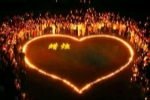
颐和园风景介绍英语作文【一】
??颐和园英语作文范文The Summer Palace can be divided into two parts: Longevity Hill and Kunming Lake. The whole garden covers an area of 290 hectares, of which three- fourths consists of a lake and rivers. This imperial garden features 3,000 room-units and covers an expanse of 70,000 square meters with more than 100 picturesque spots of interest. The layout of the Summer Palace includes three groups of architectures: palaces where the emperor attended to state affairs, resting palaces of the emperor and empress, and sightseeing areas. Entering the East Gate we will come the office quarters. Entering the East gate we will come to the office quarters. The annex halls on both sides were used for officials on duty.
This is the Gate of Benevolence and Longevity. Above the door there is a plaque bearing the same name in both Chinese and Manchurian characters. The gigantic rock in the foreground is known as Taihu rock, or eroded limestone, quarried in Jiangsu Province and placed here to decorated the garden.
On the marble terrace sits a bronze mythical beast, known as Qilin or Xuanni. It was said to the one of the nine sons of Dragon King. A point of peculiar interest is that it has the head of a dragon, antlers of a deer, the tail of a lion and hooves of an ox, and is covered with a unique skin. IT was considered an auspicious creature that brought peace and prosperity.
This grand hall is the Hall of Benevolence and Longevity. It was built in 1750, and was known as the Hall of Industrious Government. Emperor Qianlong ruled that the halls where monarchs attended to state affairs would be named after them. After the rebuilding of the Summer Palace, the hall was renamed, suggesting that benevolent rulers would enjoy long lives.
The arrangement of the hall has been left untouched. In the middle of the hall stands a throne made of sandalwood and carved with beautiful designs. In the background there is a screen carved with nine frolicking dragons. On either side of the throne there are two big fans made of peacock feathers, two column-shaped incense burners, crane-shaped lanterns and an incense burner assuming the form of Luduan, a mythological animal which was suppose to have the power to prevent fire. The small chambers on eight side were where the Emperor Qianlong and Empress Dowager Cixi rested and met officials on formal occasions.
On the verandah in the foreground of the hall there are bronze statues of dragon and phoenixes which served as incense burners on major occasions. They are hollow and smoke comes through holes on their backs. Also on the veranda are Tai Ping (Peace bronze water vats made during the reign of Emperor Qianlong. As a precaution in case of fire, a fire was lit underneath the vats in the winter to keep the water in them from freezing.
(At the entrance of Garden of Virtuous Harmony
Outside the East Gate–in front of the Hall of benevolence and Longevity- in front of Garden of Virtuous Harmony-in front of the Grand Theater Building- a lakeside walk from the Garden of Virtuous Harmony to the Hall o Jade Ripples- in front of the o Jade Ripples- in front of the Yiyunguan (Chamber of Mortal Being-Hall of happiness and longevity- in front of the Yaoyue (Chamber of Mortal Beings-Hall of Happiness and Longevity-in front of the Yaoyue (Inviting the Moon Gate of the Long Corridor- strolling along the Long Corridor- visiting an exhibition of cultural relics- in front of the Hall of Dispelling Clouds- inside the Hall of Dispelling Clouds- atop the Tower of Buddhist Incense- on a hilltop leading from the back door of the Tower of Buddhist Incense- on a hilltop leading from the back door of the Tower of Buddhist Incense- inside the Garden of Harmonious Interest –outside the south gate to Suzhou Shopping Street- atop the stone bridge inside the Suzhou shopping street –on the road from the south gate of suzhou shopping street- on the road form the south gate of suzhou shopping street to the marble boat- in front of the ruins of the Garden of complete spring –along the lakeside by the marble boat-boating on the Kunming Lake-leaving out through the East Gate.
(Outside the east gate
Ladies and Gentlemen:
Welcome to the Summer Palace. (After the self-introduction of the guide -interpreter I hope this will be an interesting and enjoyable day for you.
During our tour, you will be introduced to time honored historical and cultural traditions, as well as picturesque views and landscapes.
The construction of the Summer Palace first started in 1750. At that time, the Qing Dynasty was in its heyday and China was a powerful Asian country with vast territories. The monarch in power then was Emperor Qianlong. With supreme power and large sums of money, he summoned skillful and ingenious artisans from all over the country to carry out this construction work in honor of his mother's birthday. After 15 years and one seventh of the nation's annual revenue spent, the Garden of Clear Ripples was completed and served as a testimony to China's scientific and technological achievements. In 1860, this vast royal garden was burnt down along with the Yuanming Yuan (Garden of Perfection and Brightness by Angol-French allied forces. In 1888, Empress Dowager Cixi reconstructed the garden on the same site and renamed it the Garden of Nurtured Harmony (Summer Palace. Characterized by its vast scope and rich cultural embodiments, the Summer Palace has become one of the most famous tourist sites in the world.
This is the main entrance to the Summer Palace-the East Gate On top of the eaves of the door there is a plaque bearing a Chinese inscription which means "Garden of Nurtured Harmony", whose calligrapher was Emperor Guangxu. The gate that you are now entering was used exclusively by the emperor, the empress and the queen mother. All others used the side doors.
颐和园风景介绍英语作文【二】
??和园的介绍说明文相信许多人都写过吧,特别是写作中最基本、最常见的说明文,根据语言风格的不同,说明文可分为平实说明文和生动说明文两大类。怎么样才能写出优秀的说明文呢?下面是小编精心整理的颐和园的`介绍说明文,欢迎大家借鉴与参考,希望对大家有所帮助。
颐和园位于北京市西北郊,距市中心约19公里。它占地290公顷,水面占地220公顷。园内分为宫廷区、前山前湖区、后山后湖区三大景区。共有殿、堂、楼、阁、亭台、水榭3000余间。
颐和园里著名的长廊有700多米长,分成273间。每一间的横槛上都有五彩的画,那是清代画家的作品。长廊两旁栽着清香扑鼻、五颜六色的鲜花。
从长廊向外望去,长寿山上的景色展现在远处:一座八角形的三层建筑耸立在半山腰上,黄色的琉璃瓦在闪闪发光,还有下面一排金碧辉煌的宫殿。那就是佛香殿和排云殿。
正前面,昆明湖静得似镜,绿得似碧玉。昆明湖的中心岛环境优美,是个优雅的好地方,适宜游客休息。昆明湖里有一座石桥,它的桥身有十七个桥洞,叫十七孔桥。桥栏杆上有上百根石柱,柱子上雕刻着小狮子,姿态不一,非常可爱。
颐和园的美丽景色说也说不尽。要是你有时间,就取那儿细细游赏,你一定会被颐和园的美丽景色深深吸引。
颐和园风景介绍英语作文【三】
November **, ****
To Whom It May Concern:
This is to confirm that Mr. Li Dashui has worked as a full-time system analyst in the NY University since Jun 1994(or This letter is to verify that Mr. Li Dashui worked as an chemist from July 1993 to Sept. 1994. Mr. Lis main duties and responsibilities are as follows:
Design, develop and install various computer hardware, software and network systems for banks.
Determine and analyze the requirements of each system project into related componets solved through the application of computer technology.
Write specifications for computer programs, and test and implement programs for network systems and control systems.
Supervise computer programmers and other system analysts for paticular system projects.
Mr. Li has mainly taken part in the following projects:
The first engineering design of city general business computer network system.
Upgrading banks system for IBM AS/400 E45 to IBM AS/400 320, IBM AS/400 530.
The design development and test of city general business computer network system.
The design and development network and database systems for the Golden Credit Card Project.
Mr. Li is well experienced with IBM AS/400 system analysis, TCP/IP protocol, SNA protocol and LAN; proficient in RPGIII, VB, C/C++ and DB2, and skilled in UNIX, Informix, Client/Server etc.
Mr. Li is a hard-working and talented analyst, and is highly respected member in our company. If you need further information, please feel free to contact me. Sincerely yours, Singature, Zhang Jianguo
Senior Engineer and Technical Manage Company Name, Address, Tex Fax
颐和园风景介绍英语作文【四】
今天,终于有机会来到了北京颐和园,这里比我想象的还要美丽,颐和园是一个美丽的大公园,是一座皇家园林,果然是名不虚传。
进了顾和园的大门,绕过大殿,就来到有名的长廊。绿漆的柱子,红漆的栏杆,一眼望不到头。这条长廊有700多米长,分成273间。每一间的横槛上都有五彩的画,画着人物、花草、风景,几千幅画没有哪两幅是相同的。长廊两旁栽满了花木,这一种花还没谢,那一种又开了。微风从左边的昆明湖上吹来,使人神清气爽。
走完长廊,就来到了万寿山脚下。抬头一看,一座八角宝塔形的三层建筑耸立在半山腰上,黄色的琉璃瓦闪闪发光。那就是佛香阁。下面的一排排金碧辉煌的宫殿,就是排云殿。
登上万寿山,站在佛香阁的前面向下望,颐和园的景色大半收在眼底。葱郁的树丛,掩映着黄的绿的琉璃瓦屋顶和朱红的宫墙。正前面,昆明湖静得像一面镜子,绿得像一块碧玉。游船、画舫在湖面慢慢地滑过,几乎不留一点儿痕迹。向东远眺,隐隐约约可以望见几座古老的城楼和城里的白塔。
从万寿山下来,就是昆明湖。昆明湖围着长长的堤岸,堤上有好几座式样不同的石桥,两岸栽着数不清倒垂的杨柳。湖中心有个小岛,远远望去,岛上一片葱绿,树丛中露出宫殿的一角。游人走过长长的石桥,就可以去小岛上玩。这座石桥有十七个桥洞,叫十七孔桥;桥栏杆上有上百根石柱,柱子上都雕刻着小狮子。这么多的狮子,姿态不一,没有哪两只是相同的。
颐和园到处有美丽的景色,说也说不尽,只有自己亲自来观赏才会知道他的美。
颐和园风景介绍英语作文【五】
我没去过黄山,但是我们学了一篇名叫《黄山奇松》的课文,黄山给我印象是风景美如画,因为有“奇松、怪石、云海、温泉”四绝装扮着黄山,所以黄山就更加美丽了。奇松以迎客、陪客、送客为主,迎客松还是黄山的象征呢,这是黄山奇松。
黄山的怪石千奇百怪,有的像猴子观海,有的像猪八戒吃西瓜,还有的像武松打虎……它们奇峰罗列,形态万千。黄山上还有一座天桥,直通两座山的峰顶,高达1800多米,两面都是悬空的,低头一望便令人心惊胆战。
黄山的云海也很美,近看云海,像一层浓浓的雾,把那些奇峰遮掩了起来,大风一吹雾又散来,显现出美丽而又壮观的景色。登高看,十里间就像一片望不到边的海洋,把一座座峻岭淹没,只露出一个个山峰,美极了。
“黄山啊黄山,你真是太‘奇’了,不愧为‘天下第一奇山’,你的景色值得人们去观赏。”
颐和园风景介绍英语作文【六】
那次游颐和园,真的可以说成是一次又惊险又快乐的旅程。
进入北门,穿过一条甬道,就来到了万寿山的脚下。抬头仰望整座山,山上有规格不同的小寺庙。最高处就是佛香阁。万寿山真翠啊,翠得就像一块无暇的碧玉,看着看着,自己仿佛变成了一株小草,种在这翠绿的山前,为大山增添了一份色彩。万寿山真静啊,静得让人情不自禁地闭上眼,聆听它那美妙的音符,“叮叮咚咚、叮叮咚咚”,这是溪流奏出的乐章,“沙沙沙沙、沙沙沙沙”,这是树叶拉出的音符。万寿山真美啊,美得就连小花小草都聚集过来了。
走下万寿山,穿过一条小路,就来到了昆明湖前。昆明湖的水清得能看到水底的细沙、小鱼,如果自己就是一条小鱼,生活在这肯定是快活无比。
绕过昆明湖,走过长廊,就来到了十七孔桥前。十七孔桥犹如白色玉带跨在昆明湖上。十七孔桥桥面可以让六七匹马儿并行。十七孔桥更是精美啊,瞧,那些石雕小狮子多可爱啊,有的\'趴在妈妈脚下,有的坐在妈妈背上,还有的十分淘气,竟抱起妈妈的脚来玩耍……各个形态逼真,栩栩如生。
颐和园不愧为中国首屈一指的皇家园林,一次的游玩让我流连忘返,期待下次再来。











